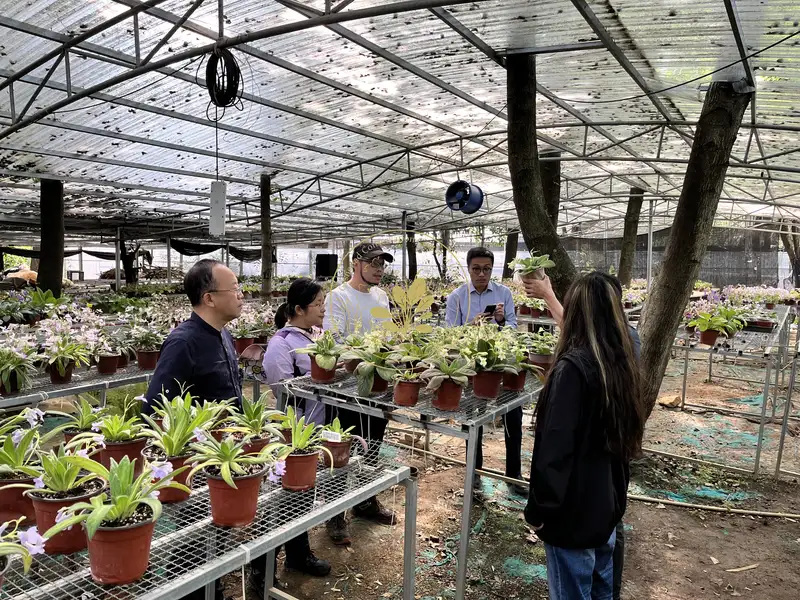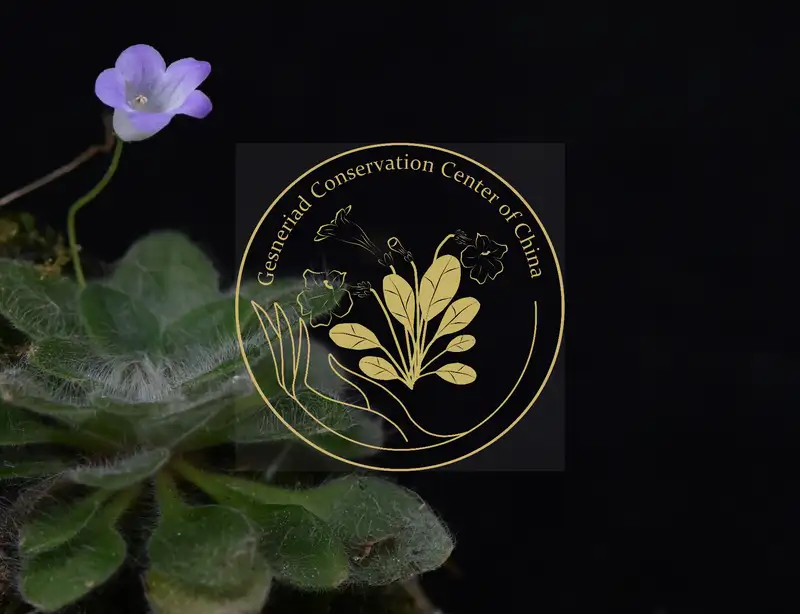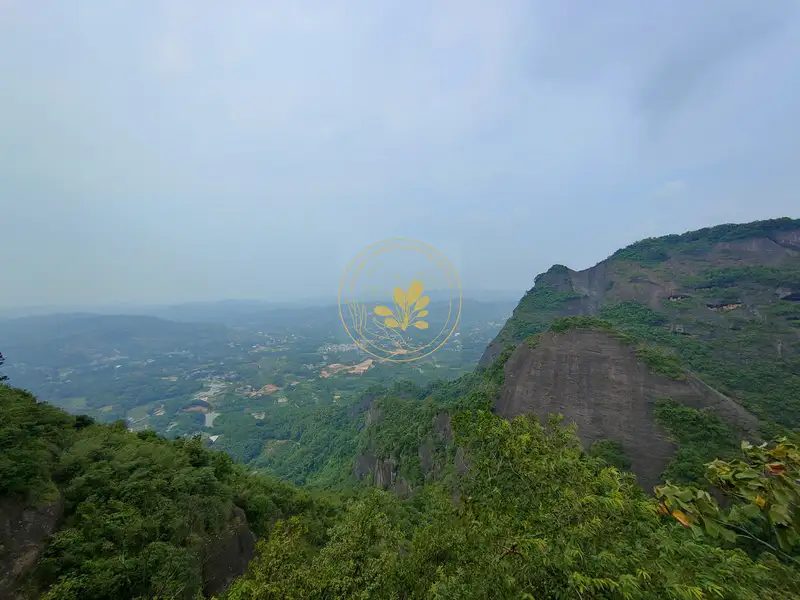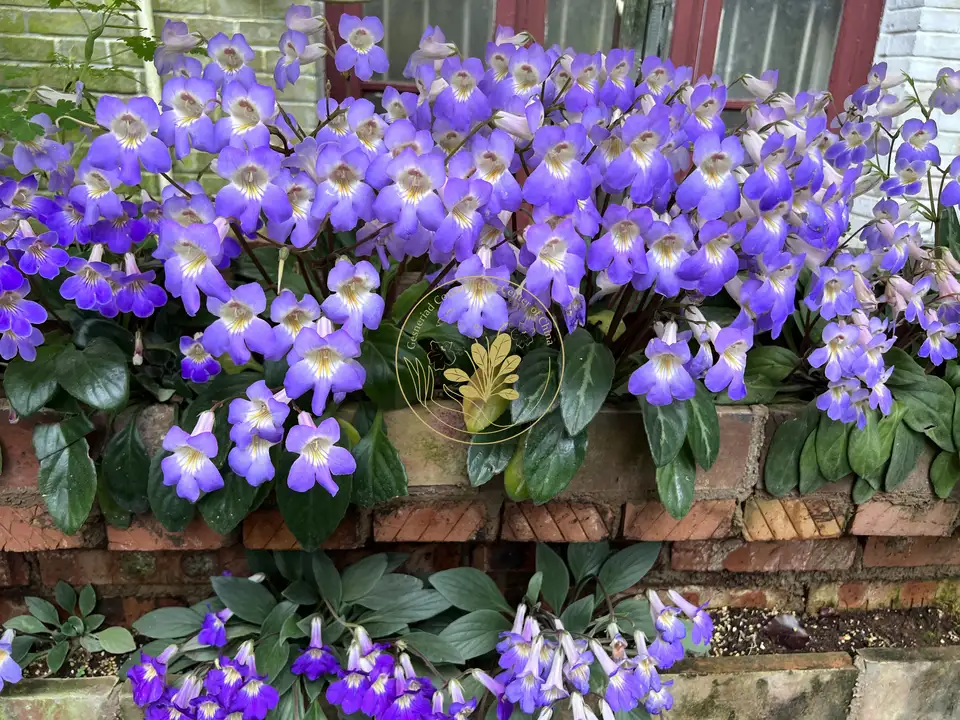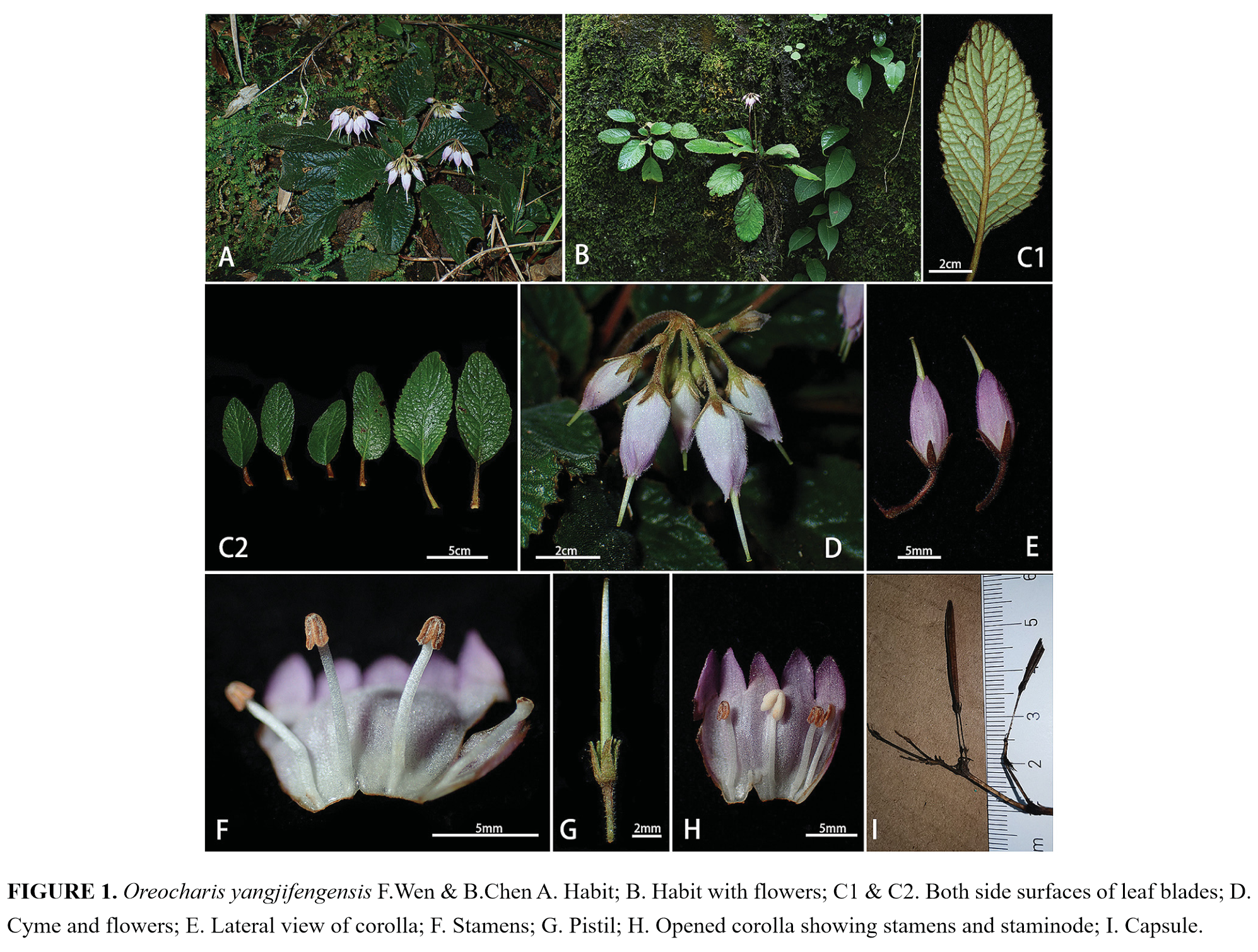It is well-known that hybridization is the regular method to get new plant varieties. Sometimes, we can find some natural crossing original species of Gesneriaceae plants, for example Primulina cardaminifolia Yan Liu & W.B. Xu, we mentioned before, which is the most probably natural hybrid origin. However, even if some species of same or different genera of Gesneriaceae grow in the same locality and get some interspecific hybrids offspring, it is not easy and rare to form a stable hybrid population so that it can evolve to be a good species. For instance, a failed “species” example is Oreocharis × heterandra D. Fang & D.H. Qin. Its population absolutely depends on the much larger population base of its parents, O. argyreia Chun ex K. Y. Pan and O. magnidens Chun ex K. Y. Pan. Oreocharis × heterandra can not form normal pollens and seeds so that it can’t get the normal offspring. It is not a “good” species. Another good example is Petrocosmea × longianthera Z.J. Qiu & Y.Z. Wang. Its parents are P. martinii (Lévl.) Lévl. and P. yanshanensis Z.J. Qiu & Y.Z. Wang. At present Petrocosmea × longianthera have formed a stable population. It is a “good” species.
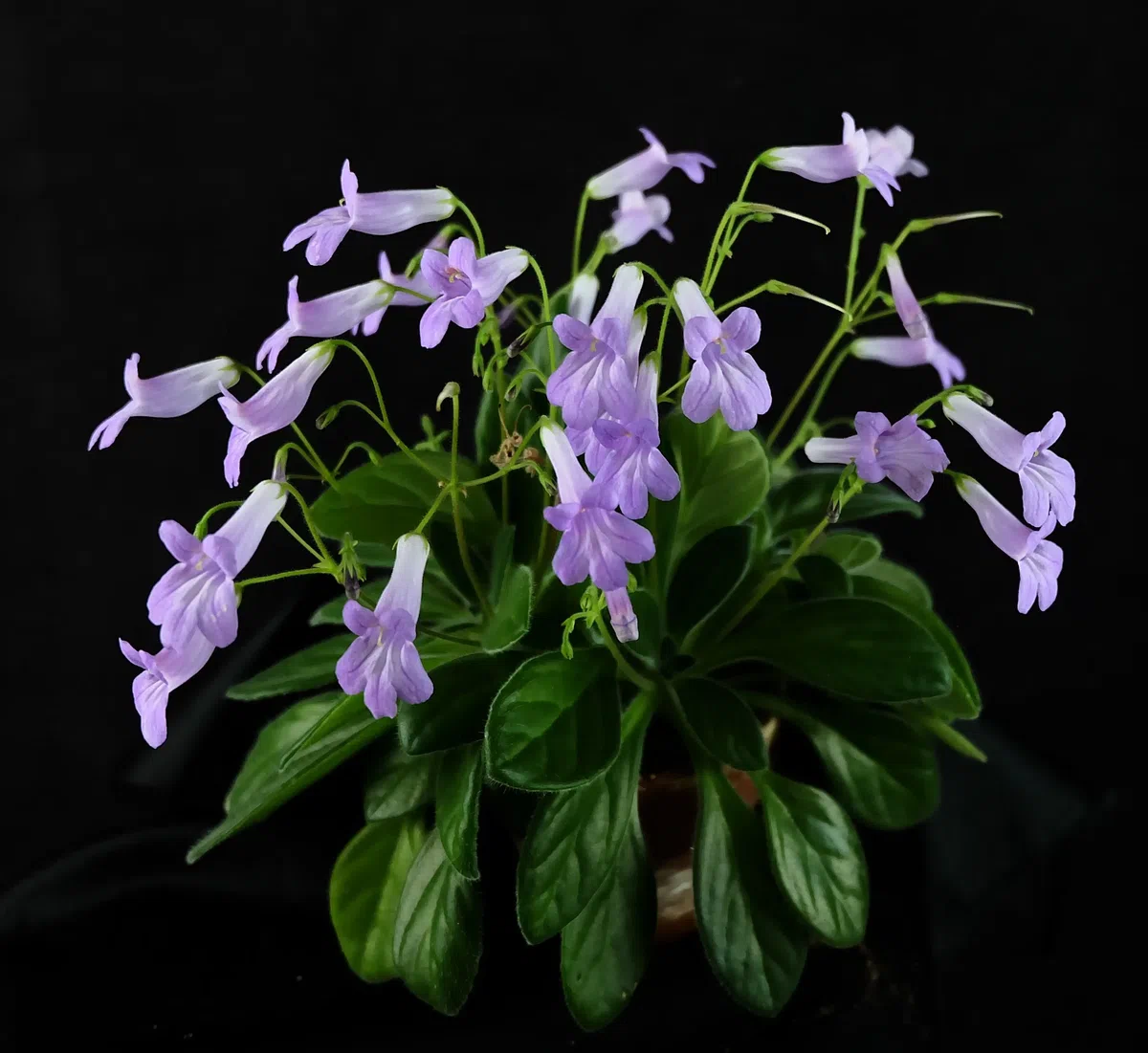
Figs. 1
So, can we find some natural interspecific hybrids offspring of Primulina in the field? After all Primulina is the biggest genus in Chinese Gesneriaceae. Obviously, you can we can everyone can. However, because those interspecific hybrids offspring can’t form normal pollens, they will disappear after some years. If you find the natural hybrids, please help them to propagate.
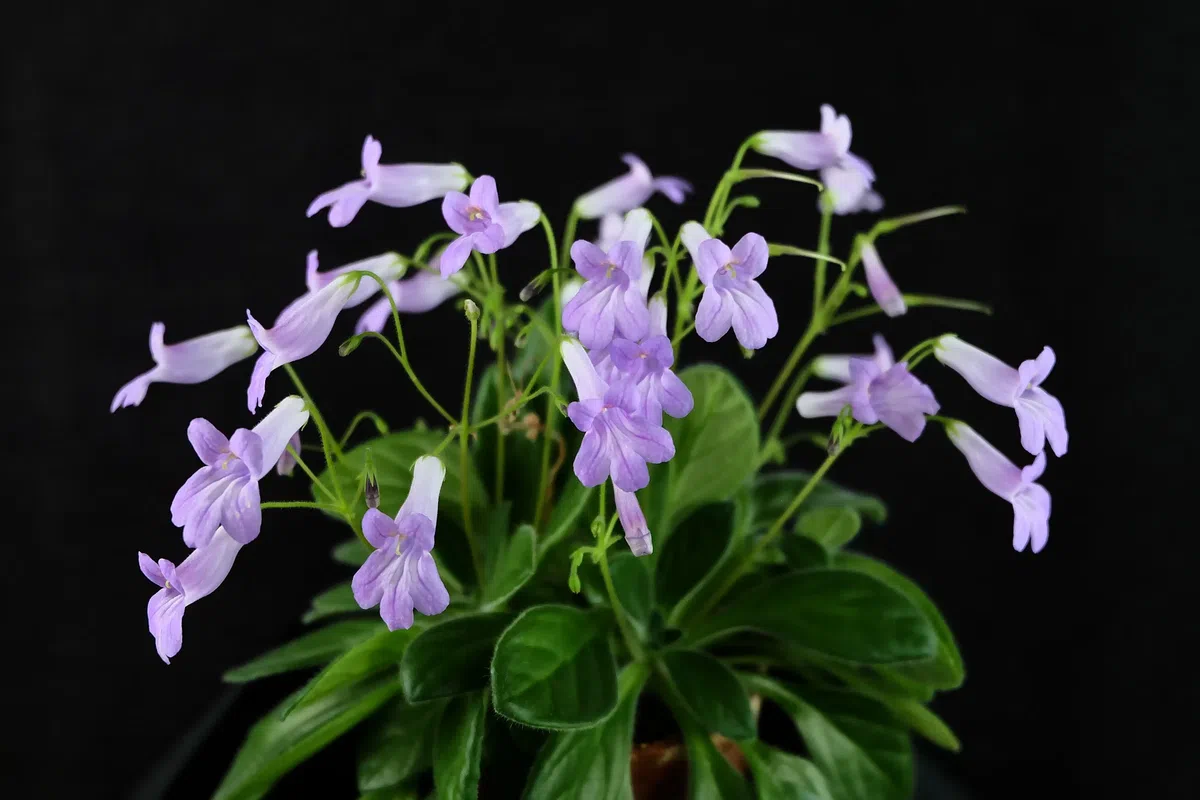
Figs. 2
How to do? Leaf Cutting! Of course, you should help them to get a “legitimate ID”. To register a name at the Gesneriad Society. Good name, good luck!
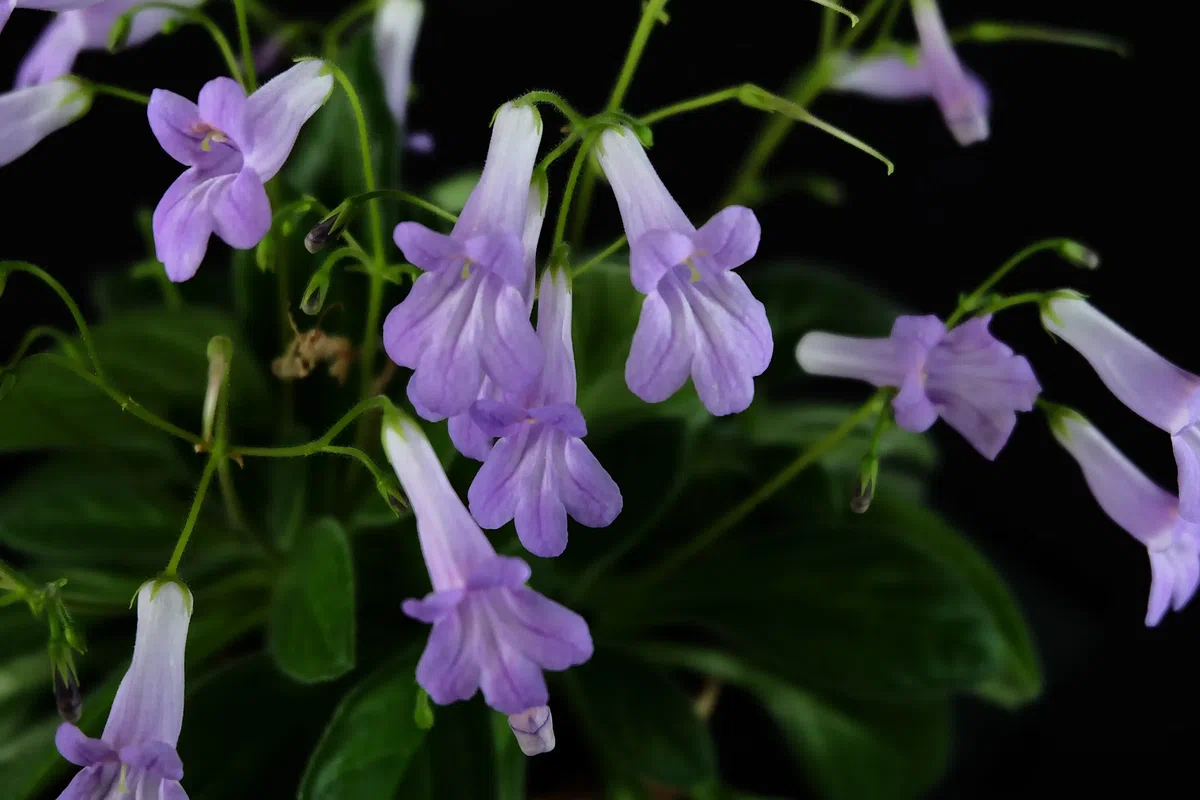
Figs. 3
Those wonderful
photos belong to a natural hybrid. It was found by Dr Wen Fang and Dr Hong Xin
in
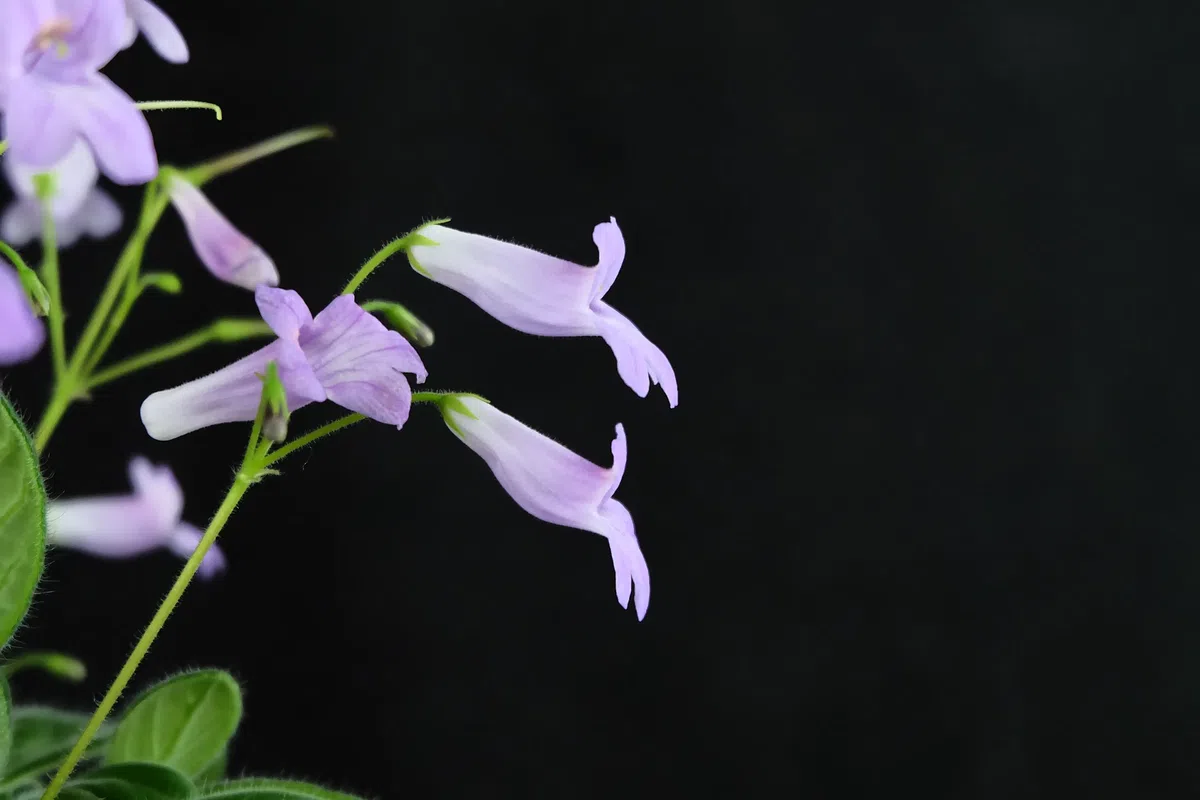
Figs. 4
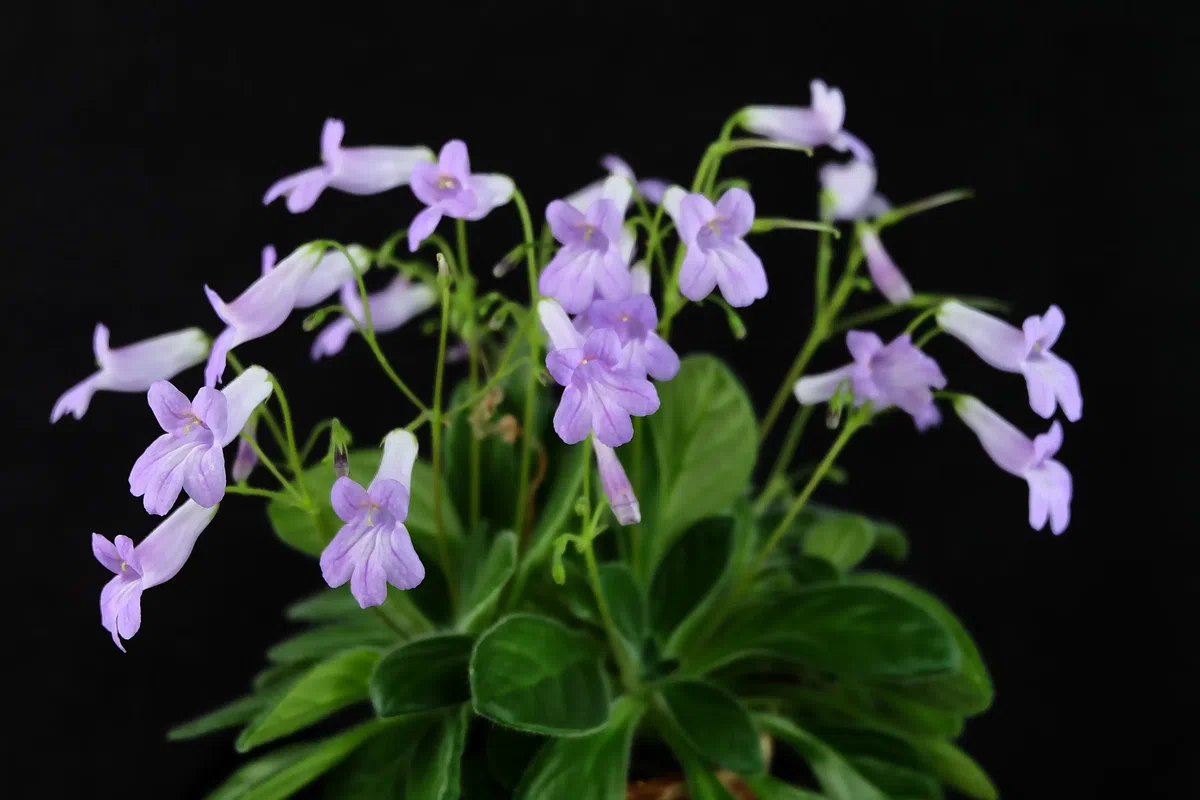
Figs. 5
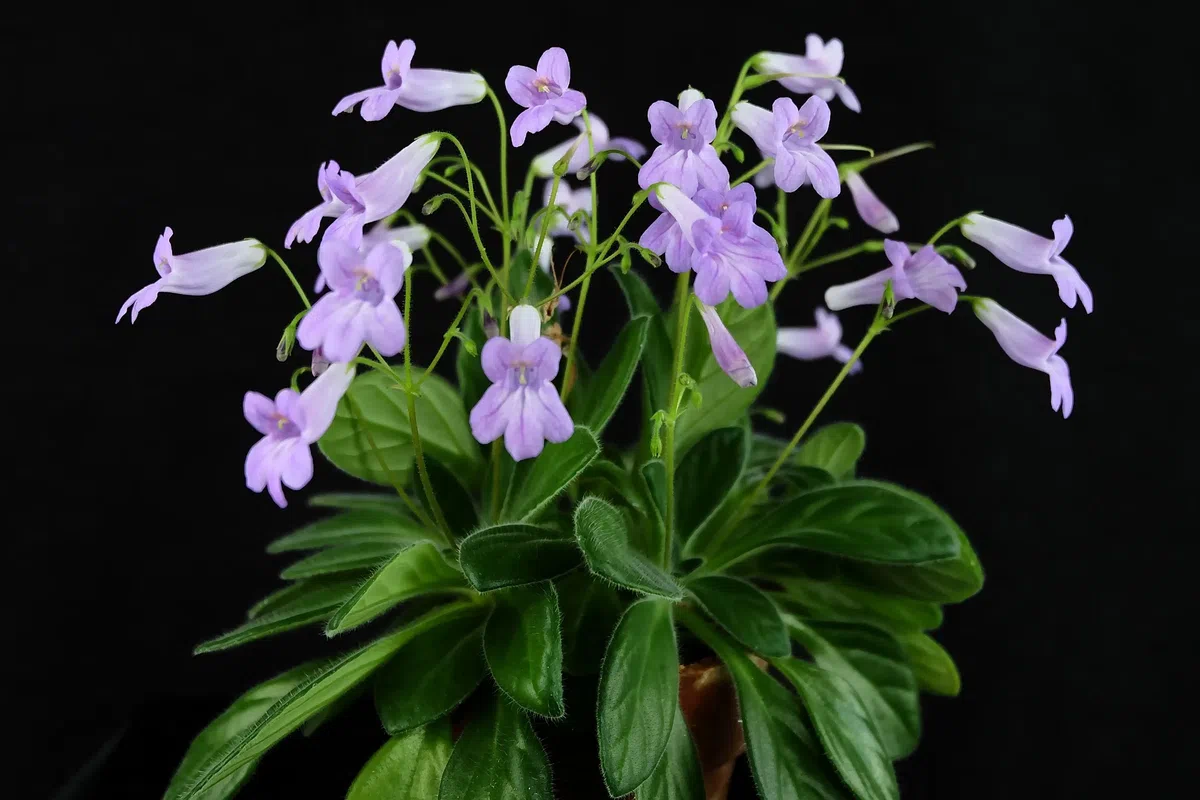
Figs. 6



